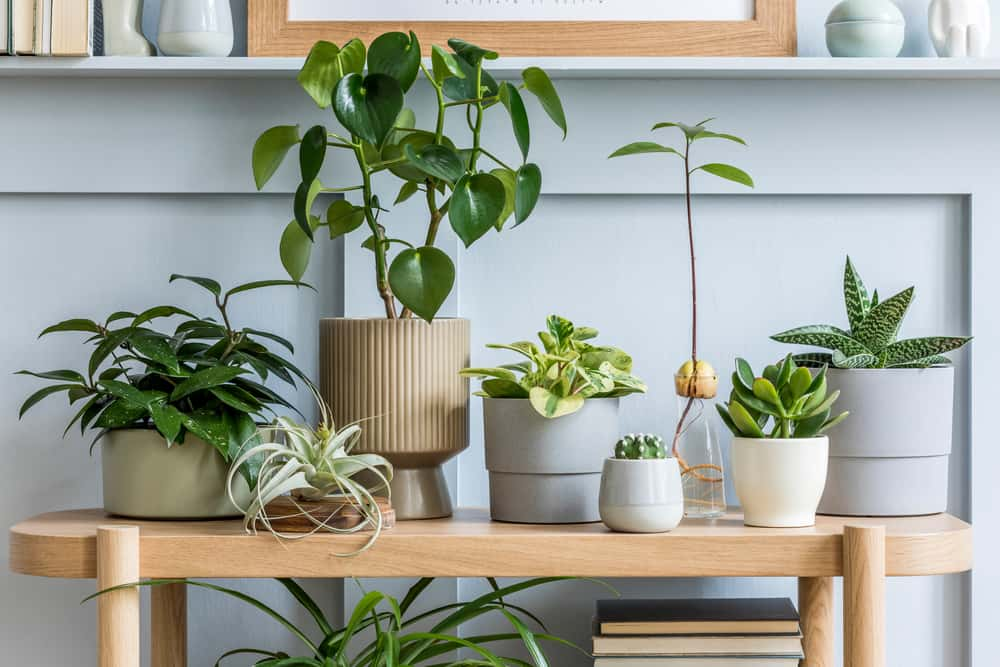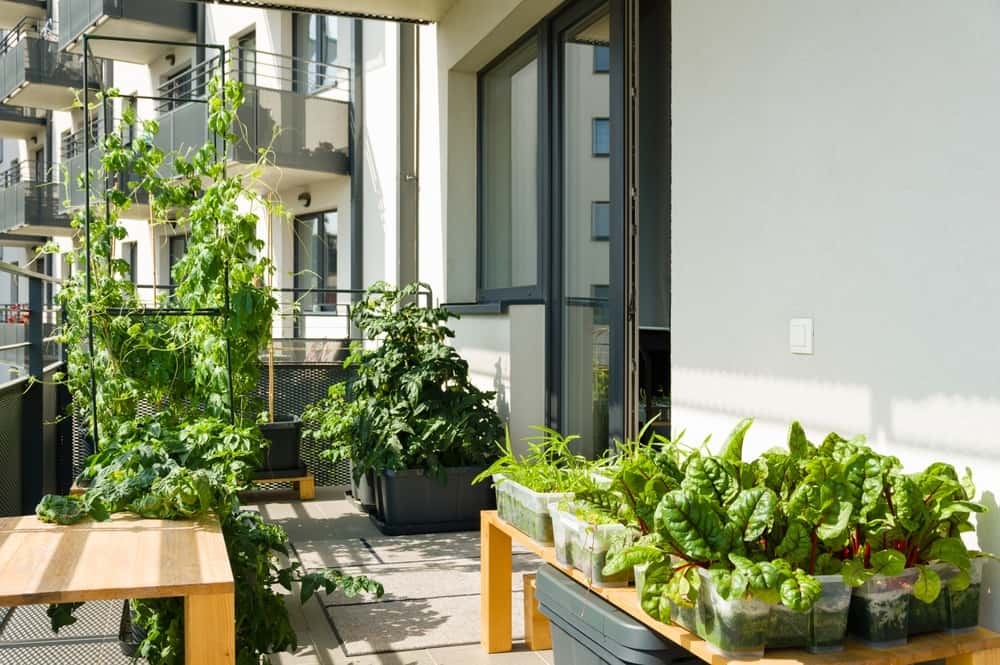Pure air is a privilege nowadays. People usually spend much of their hard-earned money on expensive air purifiers to purify indoor air. After all, we spend much time inside our home chilling, relaxing, and doing whatnot.
So, what if you can purify your home air while making your home appealing? Well, don’t be surprised. A variety of natural plants are known for their house inside their home. Indoor plants for oxygen are becoming so popular among people that the sale of indoor plants has grown exponentially over the years. Indoor plants can indeed purify your home air. And even science backs this claim.

NASA’s 1980s series of research and other future scientific studies have consistently found that many indoor plants are best known to improve indoor air quality and offer profound health benefits. Recently, as per Washington Post reports, scientists have been developing genetically modified pathos ivy (also known as super Pathos) that is tested for its efficacy against harmful toxins and pollutants.
Advantages of Planting Natural Air-Purifying, Indoor Plants
If you are still wondering if you need indoor plants for air purification, you are not alone. Let us enlighten you with some of the reasons why you need indoor plants for your home.
Avoiding the Risk of Diseases
Almost everything inside your house emits harmful gasses from furnishings to paint and from carpet to coffee table. These polluting agents are a source of many volatile organic compounds (VOCs), such as formaldehyde (a cancer-causing compound).
You would be amazed to learn that VOC levels are typically two to five times higher inside the home than outside, as per WHO. In other words, we are exposed to a large amount of indoor air pollution, which can lead to many life-threatening health issues, such as headaches, nausea, etc. These symptoms are also widely known as ‘sick building syndrome.

Enhancing the Air Quality
The other side of avoiding the health risk factors associated with indoor air pollution is indoor plants for oxygen and clean air. Indoor plants offer a plethora of health benefits.
Acting as a Natural Humidifier
Oxygen-producing indoor plants act as a natural humidifier as they reduce levels of CO2 and stale air in our environment. In other words, indoor plants improve air quality and increase relative humidity. This, in return, saves you from various types of irritation on the skin, nose, and throat.
10 Popular Air-Purifying Indoor Plants
Not only do oxygen-producing indoor plants offer various health and environmental benefits, but they are also low-maintenance. Here, we bring our top recommendation of the ten best indoor plants for oxygen and clean air.
1. Spider Plant
Some people fear growing indoor plants because caring for them can be an added task they might not have time for. For them, spider plants can be the best alternative. Spider plants are easy-to-care-for bedroom oxygen plants.

As these plants grow, their flowers eventually turn into spiderettes. Such plants love bright indoor lights, making them one of the best indoor plants for oxygen without sunlight.
Toxins/pollutants that Spider plants can remove: Formaldehyde, xylene
2. Peace Lily
Not everyone lives in a huge mansion where finding spaces is not a constraint. Most of us tend to live in spaces already cluttered with furniture and other stuff. For those who live in compact spaces, peace lily plants can be an ideal choice.

These plants are a fan of the shady pot and do not need so much watering. Peace lily plants are found to release high amounts of oxygen. However, be sure that you keep them away from children and pets, and their pollens can be toxic.
Toxins/pollutants that Spider plants can remove: benzene, ammonia, trichloroethylene, formaldehyde
3. Money Plant
We are sure that there is not anyone on the planet Earth who hasn’t heard of money plants. These easy-growing and evergreen plants are known to provide fresh oxygen supply indoors. Money plants have textured leaves that enjoy clinging to whatever they find near. 
You can put these plants either in pots or hanging baskets. And if you don’t have enough money to splurge, you can plant them in an old soft drink bottle and up your balcony designs. Fun fact: money plants are believed to bring good luck and prosperity.
Toxins/pollutants that money plants can remove: benzene, formaldehyde, xylene, toluene
4. Parlour Palm
You might have seen these fern-like plants in many hotels and public places. Parlour palm plant, also scientifically known as the Chamaedorea Elegans, is one of the best indoor plants for oxygen. 
Parlour Palm helps eliminate various harmful indoor gases and improve overall air quality. People living in moderate-to-high polluted surroundings should consider planting these beautiful plants.
Toxins/pollutants that Spider plants can remove: formaldehyde, carbon monoxide, benzene
5. Areca Palm
Areca Palm or butterfly palm plants are the best plant for bedrooms. They help remove air impurities and pollutants. The leaves of the areca palm have elevated and shapely trim that adds a lot of greenery to the space.

These plants clean air and ensure a better breathing environment. Best for placing on the staircase or balcony, areca palm plants will seriously enrich the overall look of your home sweet home.
Toxins/pollutants that Spider plants can remove: xylene, toluene
6. Garden Mum
While indoor plants offer many health benefits, there is no denying that they can sometimes be relatively expensive. However, other oxygen-producing indoor plants can be inexpensive too. Case in point, garden mums! Garden mums are one of these beautiful blooms that are the best plant for bedrooms for oxygen and clean air.

These popular plants are perfect for enhancing your living room designs as they need less than ten hours of sunlight. You can plant garden mums in Spring when the risk of frost is reduced.
Toxins/pollutants that Spider plants can kill:ammonia, formaldehyde, xylene, benzene
7. Dracaena
Finding the perfect indoor plant for your office space? Look no further. Dracaena can be your ideal fit for your home or office fit. With over forty varieties, dracaena plants can grow as high as three feet tall. This means they require larger pots and adequate space.

These plants enjoy being misted and not watered. Pet lovers need to be extra cautious while planting them as they can be toxic to pets, especially cats and dogs.
Toxins/pollutants that Spider plants can remove: benzene, trichloroethylene, xylene, formaldehyde
8. Weeping Fig
Ficus or weeping figs are native to Southeast Asia and Australia. These plants are apt for both indoor and outdoor plants. When grown indoors, these plants can reach up to ten feet tall.

This low-maintenance beauty purifies various toxins inside your home. They like bright, indirect light and enjoy a spaced-out watering routine. In other words, you should let the soil dry every once in a while before you water them down.
Toxins/pollutants that weeping fig can remove: benzene, formaldehyde, trichloroethylene
9. Snake Plant
Also known as Mother-in-Law’s Tongue, snake plants are one of the popular indoor plants for oxygen that are the toughest to kill. Snake plants do not demand high maintenance, and occasional watering will suffice.
 The best thing about snake plants is that they can tolerate light conditions. This means you can place them in almost any corner of your home.
The best thing about snake plants is that they can tolerate light conditions. This means you can place them in almost any corner of your home.
Toxins/pollutants that snake plants can remove: formaldehyde, trichloroethylene, xylene, benzene
10. Aloe Vera
Who hasn’t heard of Aloe vera and its various benefits? But do you know that aloe vera is also one of the best pollutant-killing indoor plants?

Aloe vera is also an excellent indoor plant that you can keep in your kitchen to help yourself with quick burn relief. So, hands down, whenever the list of best indoor plants is compiled, aloe vera always makes it to the top.
Toxins/pollutants that aloe vera can remove: formaldehyde
Things To Consider When Owning an Indoor Plants
Bringing these unique indoor plants for oxygen and clean air can be a real blessing in disguise for you and your loved ones. However, not everyone knows the basics of maintaining these indoor plants for oxygen and clean air.

Here are some things that you need to consider when owning these natural air purifiers
- Ensure that these plants are repotted from their original container from where you bought them.
- Using clay pots and organic soil is better for your plant’s health.
- Also, note that even though these plants demand less time, they require you to look after them. So, make sure you water them as per their requirements.
- Allow your bedroom oxygen plants to get some sunlight or artificial light.
- Regularly prune your indoor plants and check for soil moisture.
- If possible, use an artificial humidifier to maintain the plants’ surroundings.
Most people buy these indoor plants but do not care for them, leading them to unsufferable death. Remember, plants are living entities and deserve our care and respect.
Conclusion

Homes are where plants are. We usually spend about 90% of our time inside the corridors of our homes. This means that it is equally essential for us to pay attention to the kind of air that we are exposed to while we are inside the comfort of our homes. And mind you, the air inside your home is not always pure as we believe. Yeah, even our coffee table can emit a variety of harmful gases!
While air purifiers can be a bit expensive, the good news is that natural air purifiers or indoor plants can do a better job than these swanky artificial bots. Our list hopefully has been helpful for you to figure out the right indoor companion for you. So, let’s make more oxygen-producing indoor plants part of our lives and reap several decor and health benefits.
FAQs
Which houseplants can give oxygen for 24 hours?
Ans. Aloe Vera is considered the highest oxygen-producing indoor plant, giving out oxygen for more than 20 hours a day and ozone for four hours a day. As per NASA studies, Aloe Vera also emits oxygen at night and improves air quality.
Which indoor plant produces the most oxygen?
Ans. Peace lily plants release the most oxygen and consistently cleanse indoor air, especially benzene and trichloroethylene. It can be classified as the highest oxygen-producing indoor plant. However, other house plants also produce high oxygen levels, such as areca palm, spider plant, tulsi, etc.
What is the best indoor plant to purify the air?
Ans. Pothos, such as the money plant, is considered the best indoor plant used to purify indoor air and remove toxic gases. Pothos can easily convert harmful indoor gases into oxygen due to its high conversion rate. As per NASA studies, modified Pothos would be designed to be a much more powerful indoor plant for air purification than the natural ones.
Which indoor plant is good to keep in the bedroom?
Ans. The peace lily is the best indoor plant that can be kept in the bedroom. As per Vastu Shastra, Peace lilies are known to maintain and even increase room humidity levels by emitting water vapour during transpiration. In addition, similar to artificial air purifiers, these plants also produce negative ions that are good for maintaining humidity.
What indoor plants can ward off formaldehyde from our home environment?
Ans. Research has found that many indoor plants can remove various toxins, such as formaldehyde, from the air. Indoor plants such as spider plants, snake plants, aloe vera, butterfly palms, and others can ward off formaldehyde from indoor spaces. Formaldehyde can cause severe skin irritation and irritation in other parts of the human body, such as skin, eyes, nose, and throat. Exposure to high levels of such gases can also cause cancer.




